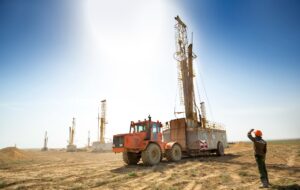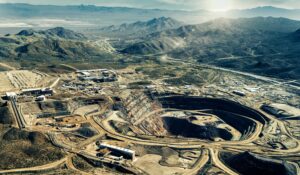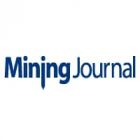Subscribe for Investment Insights. Stay Ahead.
Investment market and industry insights delivered to you in real-time.
Lyle Trytten (The Nickel Nerd) has 30 years of experience in the base metals and fertilizer industries, working on projects across multiple continents, technologies, and roles, from R&D and engineering to commercialization and operations.
This is an article that I – a Canadian – never thought I would have to write, but these are strange times. With the capricious nature of the current US administration – breaching signed treaties and contracts, threatening and imposing tariffs that change every week, annexation threats, and dramatic escalation in the restrictions and burdens placed on immigrants and visa holders – one country is trying to radically reshape the integrated nature of the global economy.
Is re-shoring entire manufacturing chains feasible or desirable?
The USA has been a manufacturing and innovation powerhouse for more than a century. The availability of vast amounts of resources – land, energy, minerals, and hard-working people from across the world – has created a country that leads the world in many important areas. The last 40 years has seen globalization reshape the manufacturing supply chains – to the benefit of consumers. What does bringing it all back home mean? What are the likely impacts in the mining and metals space? Some thoughts from a neighbour.
Mining and metals production is about extracting resources that exist in the ground and processing them to end products which are suited for making consumer goods. In some cases, this can be an intermediate material – like ferroalloys (nickel, chrome, manganese, etc) for stainless steel. In some cases, a commercially pure product is required, such as Class I nickel or LME-deliverable cobalt (both 99.8% pure) or copper for piping and electrical (>99.9%). In other cases, specific high purity requirements are necessary, for example silicon for semiconductors (eleven 9s purity). The supply chains for all can be long and involve complex processing facilities. For any country to become self-sufficient, it must have both the resources and the processing. Where does the incredibly bountiful USA sit in these metrics?
On metallic resources, the USA is quite well endowed. It has one of the world’s largest copper industries, sitting fifth at 5% of production and reserves. But its consumption is even higher, so 40% of primary copper consumed in the USA is imported – largely from Chile and Canada. It has some deposits of nickel and cobalt, but reserves are small and domestic production is nominally zero. Primary nickel and cobalt are fully imported, largely from Canada and Europe. Despite 6% of global mined zinc production and 4% of global reserves, primary zinc is 70% imported, largely from Canada – where much of US mined zinc is processed – and Mexico. 80% of primary aluminum is imported, mostly from Canada and Mexico. Across all these metals, 60-80% of imports are from countries and regions the USA has picked a trade fight with.
What does this portend? We hear about the Chinese successes with nickel HPAL technology in Indonesia, but few recall that the first facility they designed and executed (Ramu) was not a success. It works now but took 6 years to get to rate. Those years – losing money while building capability – would have crippled most market companies. From that came an ecosystem of engineering design, equipment supply, and project execution companies and tens of thousands of experienced workers that can now execute similar projects repeatably with better results.
The esteemed US metallurgist Terry McNulty has pointed out the attributes of successful projects and failed ones in a series of articles over the last 27 years. Good projects rely on mature technology and equipment design, thorough testing, and an experienced team of designers, owners, and operators with continuity through the project life. Failed projects include poorly tested new technologies, lack of understanding of the orebody, and fast-tracking. Skilled and experienced owner control over all aspects from testing through to commissioning is critical.
The world’s foremost expert on mega-projects, Bent Flyvbjerg, has recently published excellent work on project success. Common attributes of successful megaprojects are deep expertise developed from long experience, project modularity (solar panels, wind turbines), building on success (start small and build capability) and thorough planning followed by fast action. The biggest risks include uniqueness bias (this project is different from those that failed before it) and doing things that the team has never done before.
The USA does not have a vibrant mining and metals economy across the board. There are pockets of excellence and deserts of expertise. Global Business Reports (March 2025) and CSIS (May 2023) note the following (more fully covered by this publication Oct 2023):
- US mining graduates declined by 39% from 2016 and 2022 – the 15 mining and mineral engineering schools graduate less than 350 people per year
- Degree programs in these areas have dropped 40% from 1982 to 2023 to just 15 nationally
- There is one US university-level program in the global top 12 (4 each in Canada and Australia, which are also facing significant shortfalls in these sectors)
Compare this to the information economy, where the USA has more than 100,000 computer and information science graduates every year.
With a dearth of new talent and a rapidly greying workforce that has experience in only a handful of the industries needed for the future production, new mines and processing facilities are a gamble.
What does this mean for America? Expertise matters. Trade matters. Allies matter. And a path that destroys all of these is dangerous for the near term. Alienating the countries that have the resources – geologic, industrial, and expertise – needed is not a recipe for success.
I would never bet against the USA and its ability to do big things – eventually. But neither would I bet on rapid success in doing things in which it has limited expertise without significant negative consequences. On the Elements of Deep Sea Mining podcast I said that I don’t believe the USA will have significant new mining and processing running at rate in the next 5 years. Planning and executing takes time. Design, procurement, execution, commissioning, startup, and getting to full rate are difficult endeavours that require long-term thinking. This can be done on a “wartime footing” – if you’re willing to build it, scrap it, redo it, and perhaps impress people into careers they weren’t planning. But the consequences are enormous.
Is there a better route? Of course. Be a trusted trade partner – honour trade agreements and work with your allies. Build a network of like-minded countries you are proud to partner with. Welcome skilled experts into a society that doesn’t threaten them.
How can you help the USA do that?
Subscribe for Investment Insights. Stay Ahead.
Investment market and industry insights delivered to you in real-time.



















